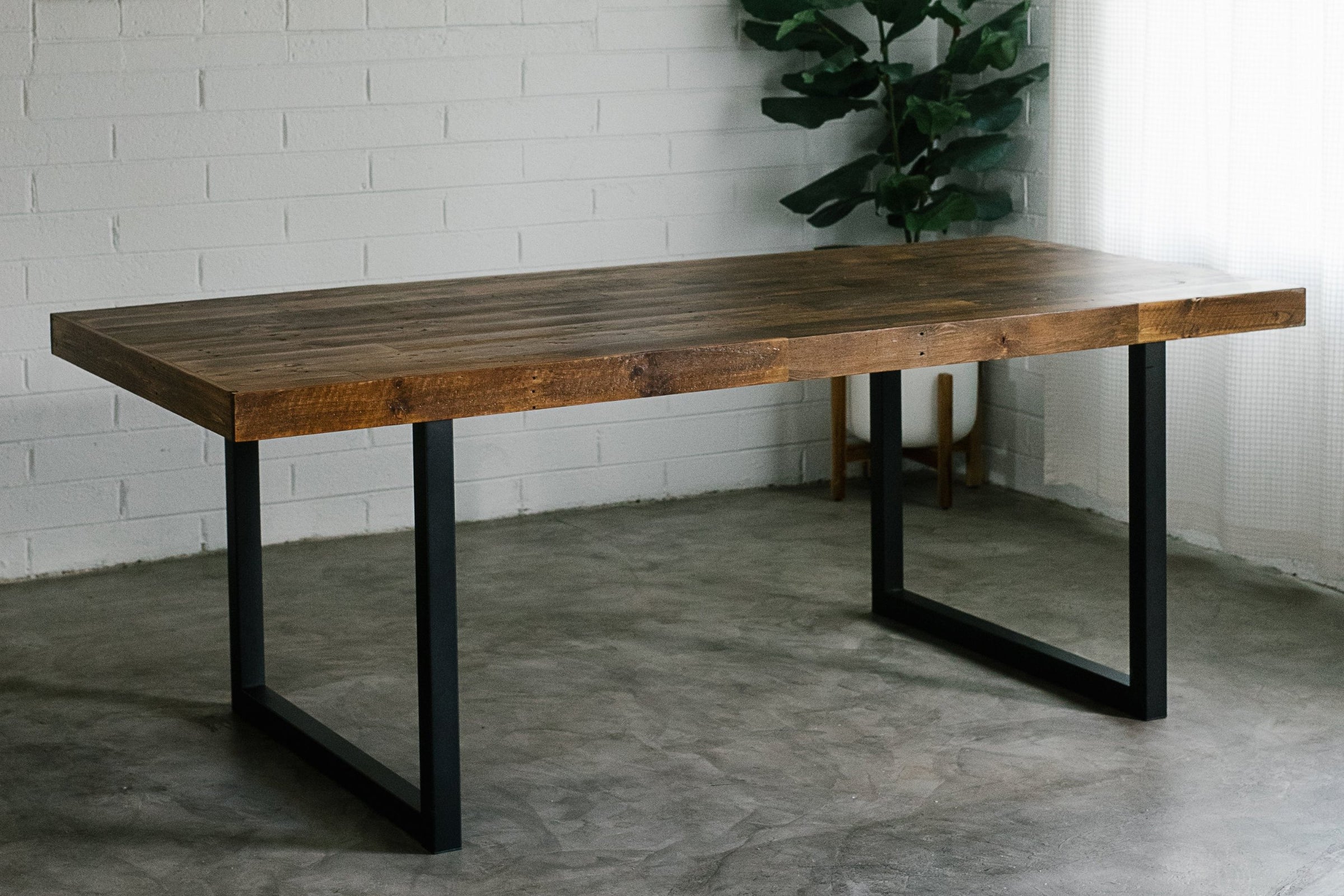Checking Out the Various Kinds Of Table Legs Wood for Your Dining Space
The choice of dining table legs timber can profoundly impact both the visual and useful qualities of your dining room. Strong wood alternatives, such as oak and walnut, give a classic look with unrivaled durability, while engineered wood options offer cutting-edge styles that simulate the splendor of natural grains.
Solid Wood Options

Additionally, solid timber is renowned for its strength and durability. Unlike crafted products, strong timber is less susceptible to warping and damages over time when correctly maintained. This makes it an excellent option for family members or those that regularly host celebrations. Each item of solid wood is special, showcasing specific attributes that include in the charm and character of the dining table.
Furthermore, strong timber can be completed in countless means, ranging from natural oils to discolored finishes, allowing homeowners to personalize their furnishings to match their decoration. In summary, choosing solid timber for dining table legs not only makes sure architectural honesty however likewise boosts the aesthetic allure of the eating area, making it a beneficial financial investment for any kind of home.
Engineered Wood Alternatives

Plywood, created from numerous layers of wood veneer, is secure and especially strong, making it an excellent choice for dining table legs. Its layered composition enables it to endure changes in humidity and temperature much better than standard solid timber. MDF, on the other hand, supplies a smooth surface for paint or veneering, making it possible for designers to accomplish a polished appearance while keeping architectural integrity.
When picking crafted timber options, it is crucial to think about the desired use and desired aesthetic. These materials not just enhance the functionality of dining spaces however additionally enable for higher design flexibility, ensuring that conventional and modern designs can exist side-by-side sympathetically.
Reclaimed Wood Features
Reclaimed wood uses an one-of-a-kind mix of sustainability and personality, making it an increasingly popular choice for eating table legs. Sourced from old barns, manufacturing facilities, and various other frameworks, recovered wood personifies a background that new materials just can not duplicate. Each piece lugs its own story, noted by unique blemishes, knots, and differing grain patterns, which add to a table's distinct aesthetic charm.
In enhancement to its visual appeal, reclaimed timber is an eco-friendly alternative. By repurposing previously used products, it decreases the demand for brand-new lumber, therefore helping to preserve forests and minimize waste. This lines up with a growing customer preference for lasting methods in home furnishings.
Additionally, recovered wood is typically a lot more long lasting than newly gathered wood due to its age. The natural drying out process that redeemed wood undertakes cause a denser and more powerful material, making it much less susceptible to warping and splitting. This boosts the durability of eating tables, allowing them to hold up against the rigors of everyday usage.
Softwood vs. Hardwood
When choosing click now eating table legs, comprehending the distinctions in between softwood and hardwood is vital for attaining both functional and aesthetic goals. They generally display a more rustic appearance, making them suitable for country-style or casual dining spaces.
On the other hand, woods, sourced from deciduous trees like cherry, oak, and maple, are renowned for their density, strength, and sturdiness. The complex grain patterns and rich tones of woods offer a advanced and ageless appeal, making them perfect for formal eating setups. While hardwoods tend to be more costly and much heavier, their resilience versus damage commonly validates the investment.
Ultimately, the selection between softwood and hardwood for eating table legs must align with your design vision, use needs, and budget, making certain that your eating space mirrors your personal design while staying functional with time.

Therapies and surfaces
The aesthetic appeal and longevity of table legs can be significantly enhanced via numerous finishes and treatments. These procedures not just read this article safeguard the wood from damages but additionally raise its appearance, allowing it to complement varied indoor styles.
One usual therapy is discoloring, which permeates the wood and boosts its natural grain while adding shade. Spots offer a rich, classy appearance, allowing property owners to match their furnishings with existing decoration. On the other hand, clear finishes such as polyurethane or varnish develop a protective layer without altering the timber's original tone, making sure toughness versus deterioration.
Additionally, all-natural oils, like tung or linseed oil, nourish the timber and provide a refined shine, all while being environmentally friendly. These oils allow the basics surface area to breathe, protecting against wetness buildup and prospective bending.
For those seeking a rustic beauty, weathered or troubled finishes can be used to create an aged appearance, including character to the piece. Ultimately, the option of finishes and therapies relies on personal choice, desired appearances, and the particular timber kind, making it necessary to take into consideration these elements when picking dining table legs for your area.
Verdict
Solid woods, crafted alternatives, and reclaimed options each offer distinct advantages, catering to numerous choices and demands. Inevitably, the selection of timber kind must straighten with preferred design, toughness, and ecological factors to consider, improving the general dining experience.
The choice of dining table legs wood can exceptionally impact both the useful and visual top qualities of your dining area - Dining Table Legs Wood. Solid timber alternatives, such as oak and walnut, supply a traditional look with unmatched resilience, while engineered timber options provide innovative designs that resemble the richness of natural grains. Strong wood provides a classic top quality that can raise the overall layout of a dining area. Each piece of solid wood is unique, showcasing specific features that add to the appeal and character of the eating table
Moreover, recovered wood is usually a lot more resilient than newly gathered wood due to its age.